October 8, 2017
Greater Yellowstone's Coming Plague
With The Arrival Of Chronic Wasting Disease Imminent, Is Government Mismanagement Threatening The Health Of GYE's Elk Herds And Humans?
PART ONE
On a map, “Deer Hunt Area 17”
is unlikely to ring any bells of geographic recognition, even for residents in
hunting-crazed Wyoming.
Located northwest of Gillette
in the Powder River Basin—a sweep of rolling, mostly treeless high plains
embedded in the largest coal-producing region in America—Hunt Area 17 on
Monday, December 19, 2016 became one of the latest in Wyoming to have a
publicly-confirmed case of Chronic Wasting Disease.
“If you see a deer, elk or
moose that appears to be sick or not acting in a normal manner, please contact
your local game warden, wildlife biologist or Game and Fish office
immediately,” Scott Edberg, deputy chief of the Wyoming Game and Fish
Department’s wildlife division, said in a press release.
Game and Fish added this to its
statement, deferring to the assessment of medical professionals at two
major public health entities: “The Centers for Disease Control and the
World Health Organization
recommend that people should not eat deer, elk or moose that test
positive for
CWD.”
Many more confirmations of CWD
are expected to come soon in Wyoming. In fact, another arrived on September 25,
2017, with a mule deer buck testing positive in Dear Hunt Area 19. It’s not
often that citizens receive advisories from a government agency cautioning them
the wild edibles they have traditionally harvested from nature for generations
should first be tested to determine if they are safe to eat.
But that’s exactly what
Wyoming’s wildlife agency did. Not long ago, Game and Fish posted an additional
bulletin, alluding to the findings of a non-peer-reviewed Canadian study in
which macaques (primates with a genetic makeup very similar to humans) were fed
deer meat contaminated with CWD and fell fatally ill with disease.
CWD is on the minds of
countless hunters in North America. Randy Newberg knows. He’s an avid Bozeman,
Montana-based sportsman and conservationist who is host of the Sportsman Channel's Fresh Tracks With Randy Newberg and one the most popular web podcasts devoted to public lands hunting.
Whenever Newberg posts a new podcast, it
often is downloaded by between 100,000 and 150,000 people. He has a YouTube
channel with nearly 40,000 subscribers and videos that have generated 200,000
views. Additionally, his website has 43,000 registered members and his Facebook
page 50,000 followers. Hunters listen to and generally trust what he has to
say.
“Am I worried about CWD?” he asked as the fall
2017 hunting season was getting underway. “Yes, I’ve been worried about it for
years in terms of what it means for the health of wild deer, elk and other
animals." He acknowledges widespread confusion among hunters and that “public discussions about CWD are all over the
map”.
“There are deniers and there are
over-reacters,” he said. “Where I am with CWD comes down to the expert opinions
of scientists, many of whom believe we could be setting ourselves up for
disaster.”
Ever increasingly, in the
rapidly-expanding reaches of the U.S. landscape becoming classified as
CWD-endemic areas, huge numbers of outdoorspeople have trepidation about
the wholesomeness of big game meat they bring home to the family dinner
table.
The laboratory study with
macaques in Canada mentioned above—if the results are confirmed by second and
third parties and replicated in months and years ahead—would represent a
frightening watershed moment in thinking about CWD’s ability to cross species
barriers. It’s a malady whose seriousness as a possible risk to humans has
often eclipsed discussion of its already real impacts to nature.
If scientists were tasked with designing an experiment to create ideal conditions for a pandemic to take hold, involving a transmissible infectious disease in wildlife during winter when they are most stressed by the elements, one example would be the complex of artificial feeding operations identical to those operating today in western Wyoming. —Dr. Thomas Roffe, former chief of wildlife health for the U.S. Fish and Wildlife Service
Indeed, the potential menace
CWD represents to the persistence of Greater Yellowstone’s migratory wildlife
has been downplayed and minimized for years in Wyoming.
Numerous critics interviewed
for this series say Wyoming’s hands'-off approach to dealing with CWD is one of the most
glaring examples in modern wildlife history where a preponderance of growing
scientific evidence, supporting the need for aggressive intervention to slow a
potential catastrophe, has been willfully dismissed to fit entrenched political
agendas and commercial interests.
Like the expanding impacts of
human population growth and climate change in the Greater Yellowstone
Ecosystem, CWD represents a true test, they say, of whether public and private
land managers, elected officials and citizens in the region can really come
together to address landscape-level challenges.
° ° °
CWD afflicts members of the
cervid (deer) family, which, in the Rocky Mountain West, includes mule and
white-tail deer, elk, and moose.
(Caribou, which dwell in the arboreal and tundra north, are also deer
family members).
Testing to determine if game
meat is infected with CWD is made only after an animal is dead, yet
living carriers of the contagion can appear normal and asymptomatic even when
stricken with the disease that will kill them.
Endemic zone classifications
for CWD applies to areas where the disease is now believed to be present in
animals. But as with the testing
mentioned above, lack of confirmation of a CWD-infected ungulate being
present in a given area does not equate to absence of disease.
While Wyoming Deer Hunt Areas
17 and 19 are a few hours’ drive from Greater Yellowstone, CWD endemic zones
already extend figuratively to the doorstep of Yellowstone and Grand Teton
national parks, the adjacent National Elk Refuge in Jackson Hole and over half
of the ecosystem’s national forests—though many hunters and the general public
may not be aware. The Powder River Basin, notably, also spills northward across
Wyoming’s border into Montana.
The
Greater Yellowstone Ecosystem, along with Montana and Idaho, are said
to be free of Chronic Wasting Disease but for how long? Some scientists
say the deadly disease is already here. Map showing the progression of
CWD in the U.S. and Canada courtesy U.S. Geological Survey's National
Wildlife Health Center
Incurable, progressive, often slow to incubate, and
except in the rarest of circumstances always-fatal, CWD has been described by
epizoologists as “a slow-motion wildlife disaster” in the making; it involves
an exotic plague—a cousin to dreaded “Mad Cow Disease"— that, true to its name,
“chronically” festers at first in wildlife at low-grade levels, spreading
between animals in dribbles and drabs.
CWD causes individual victims
to become emaciated with telltale symptoms: “vacant stares, drooping ears,
stumbling movements and drooling”. Internal physiological effects can include
transforming brains into the consistency of mushy Swiss cheese. Animals
withering in the last phase of CWD behave and look remarkably similar to humans
incapacitated in the final stages of severe dementia. Their haggard, bony appearance
could also be mistaken for animals emaciated from hard winters.
Scientists say CWD can take
years to assert full impact at a population level. It has been spreading steadily
in individual animals westward across Wyoming after it was diagnosed in the
southeastern corner of the state decades ago.
Besides being poised to reach
Montana and Idaho from infected migratory animals in Wyoming, CWD also is
pressing southward toward Montana via infected wildlife from Alberta and
Saskatchewan. At present, there currently are neither vaccines available to
stop it nor curative medicines that can be dispensed to hosts having it.
Whether a person hunts and consumes big game or is among the countless millions of Americans who simply enjoy having healthy wildlife on the landscape, CWD is creating impacts that scientists say they are just beginning to comprehend.
The only hope for potentially
dampening its impact, according to leading wildlife authorities, is taking
actions that just happen to cut against the fundamental grain of how Wyoming
has approached wildlife management for generations. In a nutshell it means
halting century-old public feeding of wildlife and viewing predators, namely
wolves, as allies in fighting diseases instead of as scourges that Wyoming
would just as soon wipe off the landscape.
° ° °
The origin of CWD is inexact.
Some believe it is related to a scrapie outbreak which afflicted domestic sheep
and then jumped species. In 1967, CWD was affirmed among captive deer kept at a
research facility near Fort Collins, Colorado and then spread into wild deer
and elk herds in that state.
Wildlife experts say the
prevalence of CWD in some southeast Wyoming mule deer herds already ranges
between 20 and 45 percent. Most victims die within two years of becoming
infected but can live for half a decade. CWD is more common in bucks than does
and prevalence oscillates differently in deer than elk but some outbreaks of
CWD in both captive deer and elk have been equally severe.
Whether a person hunts and
consumes big game or is among the countless millions of Americans who simply
enjoy having healthy wildlife on the landscape, CWD is creating impacts that
scientists say they are just beginning to comprehend.
Twenty years ago, Jim Posewitz,
a revered sportsman in Montana and lifelong conservationist who worked for the
Montana Department of Fish Wildlife and Parks, expressed concerns about CWD to
me around the time that voters in his state went to the polls passing a ballot
initiative to outlaw wildlife game farms.
Game farms are private
facilities where wildlife is husbanded like livestock, sometimes to serve as
trophies in canned hunting behind fences, sometimes to be used as breeding
stock, or sold as meat to restaurants. Some horns from male deer and elk at
game farms have been exported to Asian markets where they are marketed as
traditional medicines and aphrodisiacs.
The campaign to ban game farms
in Montana was prompted by rising concerns relating to diseases. One game farm
deemed especially problematic was a fenced compound operated by Welch “Sonny”
Brogan just outside of Gardiner, Montana near the northern border of
Yellowstone National Park and right in the middle of a wild elk and bison
migration corridor.
The late Mr. Brogan, who became
known as “the granddaddy” of Montana game farms, was charged in 1989 with capturing
wild elk and having poorly maintained fences that could result in captive elk
escaping. Brogan fought the charges but
his conviction was upheld by the Montana Supreme Court in 1993.
The reason the fencing issue
was so important is that Brogan at one point was accused of selling some of his
captive elk to a game farm in Canada—animals that later became sickened with
bovine tuberculosis, a virulent disease that not only kills wildlife but is a
hazard to humans. An investigation resulted in Brogan’s facility being placed
under quarantine and him ordered to pay $100,000 to the game farm with whom he
did business.
Around the same time as
Montana’s ballot initiative, a Canadian biologist named Dr. Valerius Geist, who
is today a professor emeritus in Environmental Science at the University of
Calgary, was on the stump warning about the consequences of epizoonotic
diseases flaring among captive animals in game farms throughout the Canadian prairie
provinces. He and I had many long conversations and he warned that CWD was more
frightening than any other malady he was tracking.
A major scare arrived in 1999
with the discovery of nine captive CWD-infected elk at an “alternative
livestock” facility near Philipsburg, Montana. For a time, some wondered if any
had escaped to the wild. Geist’s jeremiads helped sway public opinion in Montana
to realize the seriousness risk of disease.
Echoing Geist, Posewitz said
two decades ago that “once, and if, CWD ever arrives in our wild deer and elk
herds in Montana, all bets are off. You won’t be able to control it; it’s going
to forever change how we think about those animals.”
Many believe the tipping point
moment with CWD, predicted ominously by Posewitz and Geist, has arrived. Are
natural resource agencies in Greater Yellowstone adequately prepared to deal
with its onset?
With CWD now bearing down on
Montana from two different directions, the state has beefed up its surveillance
regimen. Since 1998, postmortem samples from more than 17,000 wild elk, deer
and moose have been tested for CWD in Montana but no positives have yet turned
up. Montana also encourages motorists who salvage road-killed game animals for
their dinner table—yes, there’s a state law allowing people to do that— to turn
in the heads of deer and elk recycled from highways for testing.
Most troubling to biologists is
how CWD could affect wildlife in Greater Yellowstone already coping with the
stresses of habitat loss caused by a rapidly-expanding footprint of human
development, and by climate change transforming the ability of landscapes to support
large numbers of wild ungulates.
To readers who don’t know,
Greater Yellowstone, which overlaps the corners of northwestern Wyoming,
southwest Montana and eastern Idaho, is a 22.5 million-acre region that, due to
its migratory wildlife, is often compared to the wildlife-rich Serengeti region
of eastern Africa. It is the most iconic and still ecologically intact wildland
ecosystem in the Lower 48 and one of the best-known in the world.
But because of the way elk are
controversially managed in western Wyoming, it represents a case study,
scientists say, for how not to steward public wildlife in the face of an
advancing pandemic.
Dr. Thomas Roffe, a
veterinarian and former national chief of wildlife health for the U.S. Fish and
Wildlife Service, told me this: if scientists were tasked with designing an
experiment to create ideal conditions for a pandemic to take hold, involving a
transmissible infectious disease in wildlife during winter when they are most
stressed by the elements, one example would be having game farms. The other would
be creating a complex of artificial feeding operations identical to those
operating today in western Wyoming.
Indeed, CWD has
never arrived in a healthy, still-functioning wild ecosystem with so
much going on in terms of interactions between predators and prey, sheer
numbers of potential victims, and complicated migrations happening over
long distances on a high-profile public stage with a global profile.
The stakes are high. Hundreds
of thousands of wild elk, mule and white-tailed deer move in herds or small
bands, circulating throughout Greater Yellowstone across jurisdictional
boundaries of land management agencies, intermingling seasonally and dispersing
again across huge, mind-boggling expanses of terrain. Those animals, in turn,
come in contact with other herds up and down the northern Rockies.
The wild, healthy ungulate
herds function like pumps of biomass flowing across the landscape, providing
nourishment for a wide range of predators and scavengers, including grizzlies,
wolves, wolverines and even rodents.
Dr. Thomas Pringle, a
molecular bio-geneticist and respected authority on CWD and prion
diseases, said mammal-to-bird transmission is highly improbable. He also
said that birds such as raptors, corvids and other avians are not
carriers. Dr. Pringle has been vocal in his concerns about the reach and
impact of prion diseases, and Mountain Journal will highlight his worries about transmission in subsequent parts of this special series.
The Wyoming feedgrounds, he and others say, represent a point of
tightly-packed unnatural confluence for several herds in winter, meaning
that if
animals get sick there, they will carry diseases with them elsewhere.
Similarly, if stricken animals arrive on the feedgrounds, there is a
much stronger probability, given the notoriously high densities of animals, that they could be seeds to an outbreak. This is one of the golden rules of epidemiology.
In addition to Greater
Yellowstone’s global reputation for hunting, non-lethal wildlife watching in
Yellowstone and Grand Teton national parks alone is the anchor to a nature
tourism industry estimated to be worth at least $1 billion annually to local
economies. Wildlife watching supports a lot of businesses in every gateway
community.
CWD is beginning to enter the Greater
Yellowstone from the east and south. This is one of the ominous, urgent questions
that speaks to why CWD is more than just a possible worry for hunters putting game meat
in their freezers:
What happens if, and when, elk,
deer, and moose in Greater Yellowstone start dropping dead from CWD, whether in
the valleys and geyser basins of Yellowstone Park in front of tourists, the middle of the Elk Refuge
along busy U.S. Highway 191 in Jackson Hole, the flats of Grand Teton or even within
the city limits of Bozeman, Cody, Lander and Rexburg?
Will dead animals be quickly
retrieved to prevent them from causing accumulating environmental contamination? Will the
carcasses be dumped in landfills or incinerated? Does it mean that every live
deer, elk or moose that looks lean and weakened after surviving the winter will
be treated as a possible CWD carrier?
How does having CWD-infected herds affect the public perception of wildlife?
It’s a grave prospect on the
minds of Yellowstone Superintendent Dan Wenk and his staff. Wenk, however,
admits there is no plan, no coordinated strategy existing between state and
federal agencies for how to confront CWD.
The very government entity that
was created to formulate regional strategies—the Greater Yellowstone
Coordinating Committee—does not have a unified plan.
Apart from CWD’s deadly
consequences for members of the deer family, concerns abound about CWD’s
potential for crossing other species barriers. There is fear about it
potentially infecting mammalian and avian predators and scavengers, ranging
from grizzlies, wolves, coyotes and foxes to eagles, ravens, and magpies that
feast upon dead animals. Yet the real wild card is what risk, if any, CWD and
its possible mutations poses to human health?
That risk appears to be
remote, but it might or might not be.
Some scientists, like Dr. Don
Davis, professor emeritus at Texas A & M University and a vocal defender of
game farms in Texas where CWD is a growing issue, claim the risk is nominal,
that raising the threat of CWD to human health is nothing more than media hyperbole.
He wrote a couple of diatribes after media reports about the Canadian macaque
study.
In a recent op-ed, Davis
highlighted the important fact that there hasn’t been a single verified case of
humans contracting CWD by eating an infected big game animal. “As a
research scientist with 40 years of experience in the area of wildlife
diseases, I have been regularly disappointed, disgusted, alarmed, and amazed at
both the amount and frequency of alleged facts reported on CWD. These ‘facts’ are based entirely
on totally unsubstantiated rumor or—even worse—on horribly misquoted science by
misguided or misinformed individuals,” Davis wrote recently in an editorial
widely circulated to newspapers by an organization called The Exotic Wildlife
Foundation.
Dr. Davis’ assessment, however,
is far from universally shared by peers working in wildlife medicine, including bio-geneticist Pringle. In fact,
people I spoke with say Davis' opinion would be in the minority.
A far greater danger is
minimizing the seriousness of the possible threat, suggests Dr. Michael W.
Miller, a senior wildlife veterinarian with the Colorado Division of Wildlife
and a noted CWD authority. With prion
diseases, increased likelihood of human infection is really a matter of a lot
of people eating a lot of contaminated game meat.
“For a long time, some have
been clinging to the naïve hope that if we just ignore chronic wasting disease
and do nothing, it will go away,” Dr. Miller told me. “The problem is that CWD
has not gone away. It is not becoming rarer in the wild. In fact, it’s become
measurably worse over time. It is becoming more prevalent in wildlife, not
less.”
Miller, known for his
cool-headed discussions about risk, acknowledges that he is concerned foremost
about its impacts on wild ungulates and the domino effect of direct and
indirect impacts it could set off for other species.
The spread of CWD in
free-roaming North American wildlife is considered a new disease phenomenon,
epizoologists say; in other words, it hasn’t been in the environment very long
and given its brevity on this continent, there are many unknowns of how it will
become ultimately manifested.
Unfortunately, the more that
new information has emerged in recent years, the level of concern has risen,
not fallen. Some contagious diseases over the course of time run their course,
leave behind survivors that carry immunity and then die down. Scrapie in domestic sheep is an example of
that, Dr. Miller says. But CWD is accelerating in its geographic reach.
The agent that causes CWD is
not a virus, bacteria, fungi or parasite—not a typical living organism—
but misshapen proteins called prions without DNA and RNA structure that
become harbored mostly in the brains and central nervous system of deer
family victims.
As one researcher told me,
“they [prions] are weird, they’re not like normal proteins and unlike
viruses
and bacteria they do not produce an immune response from the organisms
they
attack. We don’t know what activates them and we don’t know what the
triggers
are that could cause them to mutate, making them more conducive to move
from
one species to another.” In this case, "mutation" means prions being
altered in ways that increase the odds of transmission between wildlife,
livestock, and people.
CWD is categorized among a
general suite of neurological illnesses known as transmissible spongiform
encephalopathies (TSEs). In cattle (and other hooved animals). the
disease is grouped among a malady category called bovine spongiform
encephalopathies or BSEs.
CWD, also nicknamed “mad deer”
and “mad elk” diseases, is a cousin of scrapie (which targets domestic sheep).
To claim, as some do, that CWD won’t proliferate within Greater Yellowstone
deer and elk, and possibly represent a hazard to livestock or predators, which
includes humans, is, in the opinion of experts I spoke with, to deny the
reality of what has already been demonstrated elsewhere with prion diseases.
The best example of species
barriers being breached with TSE prion diseases is found in Britain where
around 200 humans who ate domestic cattle infected with Mad Cow died. The human
version of Mad Cow Disease is a TSE called Creutzfeldt-Jacob Disease and another,
variant-strain Creutzfeldt-Jakob-Jacob, both of which are very rare.
British cattle were believed
infected after the remains of sheep suffering from scrapie were ground up and
blended with feed poured into their troughs. The Mad Cow scare, which made
headlines and caused panic around the world, resulted in the depopulation and
incineration of millions of domestic cows that were potentially exposed to
sickened animals. It also elevated concerns about lasting environmental
contamination in the ground, a worry later validated by an experiment in
Wyoming.
Likely, millions of people in
Britain and elsewhere came in contact with BSE-infected beef, hence the
parallel to keep in mind with what Miller said about the likelihood of CWD
transmission to people increasing with lots of hunters eating lots of
contaminated game animals.
Were CWD to afflict humans, the
most likely route of transmission would be from CWD-carrying wildlife
infecting cattle or domestic sheep and then humans consuming those
animals. There are no documented cases of prions shed by deer or elk
infecting cattle.
An advisory posted by the
Centers for Disease Control in Atlanta, the nation’s premiere authority on
infectious pathogens, states: “Concerns have been raised about the possible transmission
of the CWD agent to domestic animals, such as cattle and sheep, which may come
in contact with infected deer and elk or CWD-contaminated environments. If such
transmissions were to occur, they would potentially increase the extent and
frequency of human exposure to the CWD agent. In addition, passage of the agent
through a secondary host could alter its infectious properties, increasing its
potential for becoming more pathogenic to humans.”
Prions are notoriously hard
biological particles to destroy. Cooking does not kill or immobilize them. They
can remain actively infectious in the tissues and fluids of living and dead
animals. They can also leach into the environment through feces and urine and,
as the carcass of a dead animal decays, contaminate soils and water for long,
indefinite periods of time.
Recent scientific studies in
controlled settings also have shown that prions shed into the ground,
especially in clay soils to which they bind, can even be taken up in
living
vegetation. And many believe that CWD prions could be dispersed more
widely across landscapes by being bound up in alfalfa that is shipped
far and wide as hay bales and then fed to livestock.
So, is it possible for CWD
prions to mutate and thereby become transmittable from members of the deer
family to people, or other creatures eating contaminated meat, or by merely
ingesting infected brain, spinal fluids, plants and water?
What about elk and deer that
might appear healthy, but actually aren’t and are then consumed by people, or
asymptomatic infected animals that come into contact with other animals being
packaged at local meat processors?
What are the odds that domestic
livestock grazing on contaminated grass growing from contaminated soil, be it
on public or private lands, could become infected?
The answers are that no one
knows yet, but some of the emerging indicators keep the level of concern
heightened. Uncertainty is why the CDC and World Health Organization have for
years offered their cautions against human consumption of cervids that test
positive for CWD.
Whether actual risk of prion
transmission to humans is low, as Dr. Davis suggests, or higher, if mutations
occur enabling CWD to jump species, it is a calculation that individuals must
make in eating game meat.
Although it is admittedly a
small sample size, a dozen different people— (scientists, wildlife managers,
and conservationists)—well versed in the research of CWD and who also hunt elk
and deer, told me they would not feed even healthy big game coming out of a
CWD-endemic area to their families. That hasn’t stopped deer hunters in
Wisconsin (which we’ll get to later in this series)
Recent studies, like the
research on macaques in Canada, suggest CWD jumping the species barrier to
humans is possible. But Dr. Davis questions the techniques used in the studies
and he points out that a similar earlier experiment demonstrated no linkage, a
reference that will be explored in ensuing parts of this series.
While the risk of CWD prions
infecting people is low, threats to wildlife and landscape, however, are not.
Some have alluded to CWD’s arrival in Greater Yellowstone as a “ticking time
bomb about to go off in the premiere wildland ecosystem in the Lower 48”.
BSE-related prions have
demonstrated their ability to transcend boundaries between sheep and cattle,
and across deer family members, and even from cattle to bison and, as
demonstrated by Mad Cow, to people.
Undeniable, experts say, are
the threats posed to wild ungulates. Ironically, the future health of Greater
Yellowstone’s vaunted migratory ungulate herds is being jeopardized by the very
government agencies whose duty it is to protect public wildlife from harm, says
Lloyd Dorsey, conservation director with the Wyoming state chapter of the Sierra Club.
Even a federal court has found
the U.S. Fish and Wildlife Service guilty of engaging in management malpractice
and violating federal laws.
Ground zero for this prima
facie argument is the National Elk Refuge home of the Jackson Elk Herd, the
most famous wapiti herd in the world. The 24,700-acre Elk Refuge is
administered by the Fish and Wildlife Service, long touted as the top wildlife
agency on the globe.
Nearby, in western Wyoming are
the 22 feedgrounds run by the Wyoming Game and Fish Department.
Artificial feeding of wildlife in ways that bunch animals in large
numbers is considered a
cardinal sin in modern wildlife management because of the ripe
conditions it
fosters for disease outbreaks.
At the Elk Refuge alone during
the winter of 2017, more than 8,800 elk converged around artificial food
rations given to them. Combined with the
state feedgrounds, upwards of 21,000 wild wapiti are congregated unnaturally
together in western Wyoming, leaving them more vulnerable to catching not only
CWD but bovine tuberculosis, Septicemic pasteurellosis and hoof rot. High rates of brucellosis
infection among wild elk nourished at feedgrounds prove the point.
Wyoming for a long, long time
has justified its refusal to close down feedgrounds by, more or less,
portraying CWD as merely a hypothetical risk.
In August 2004, the Wyoming Game and Fish Department released what
it called a comprehensive white paper titled “Elk Feedgrounds in Wyoming”.
Its authors were: Ron Dean, Mark Gocke, Bernie
Holz, Steve Kilpatrick, Dr. Terry Kreeger, Brandon Scurlock, Scott Smith, Dr.
E. T. Thorne, and Scott Werbelow. “Many people are concerned that elk on
feedgrounds may mimic the circumstances of elk in captivity and suggest that
feedgrounds will result in high CWD prevalence resulting in drastic population
declines as implicated by the disease models. Although this may happen, a
perfectly acceptable alternative hypothesis is that CWD will have little or no
impact on elk populations based on the known low prevalence rates for CWD in
wild elk. Although there are many opinions, no one knows what will happen if
elk on feedgrounds become infected with CWD.”
Wyoming politicians and
associates have demonstrated their disdain for scientists in federal agencies
raising the certainty of CWD, and administrators in the Wyoming Game and Fish
Department have sent a clear unwritten message down the ranks that dissent—i.e.
staffers who say feedgrounds should be shuttered— will not be tolerated.
Jackson Hole valley folk, some
of whom hail from the same families who in the 1930s and 1940s fought creation
of Grand Teton National Park, have also taken out full-page ads in the local
newspaper condemning fellow citizens and public servants who speak a different
reality that does not comport with their own world view and economic
self-interest.
Bruce Smith, who spent decades
at the National Elk Refuge rising to the rank of senior biologist and who wrote
an acclaimed book, “Where Elk Roam: Conservation and Politics of Our National
Elk Herd”, dared on several occasions to publicly declare the era of
artificially feeding elk has to end. That was met by calls for his firing as a
civil servant and later as an alleged speaker of heresy in local newspaper
ads.
If Wyoming believes it will be
able to market its way out of a CWD crisis or deny culpability for a problem it
has known is coming, Smith told me recently, then it is in for a rude
awakening. This isn’t just any region. It is the Greater Yellowstone Ecosystem,
with Yellowstone National Park at its wild heart. It has a national
constituency. The public will demand answers and accountability; citizens will
want to know the names of who was in charge and did little to prevent disaster
from happening.
Next—Part 2 in the series, Greater
Yellowstone's Coming Plague: With The Arrival Of Chronic Wasting Disease
Imminent, Is Government Mismanagement Threatening The Health Of
Ecosystem Elk Herds And Humans?

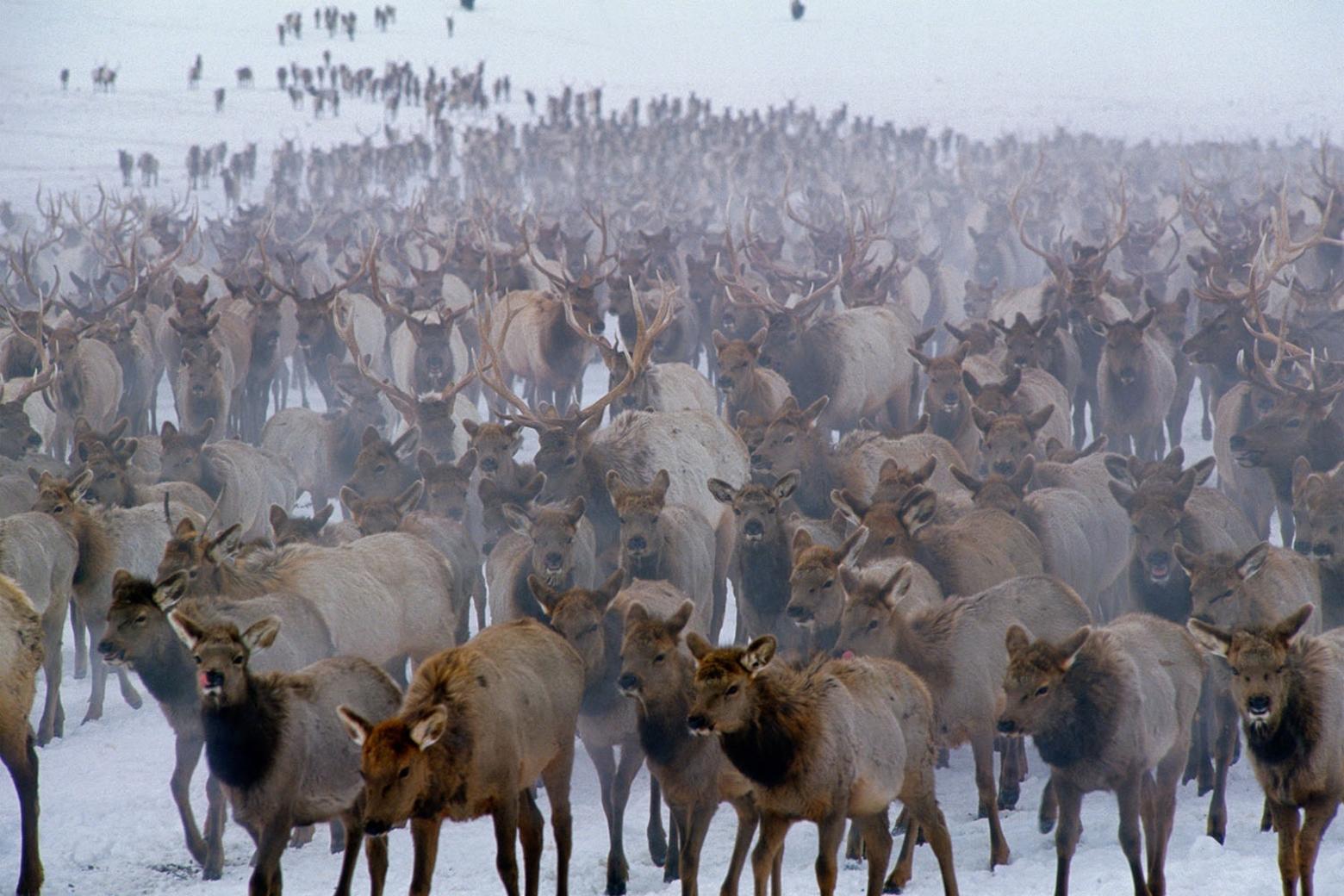
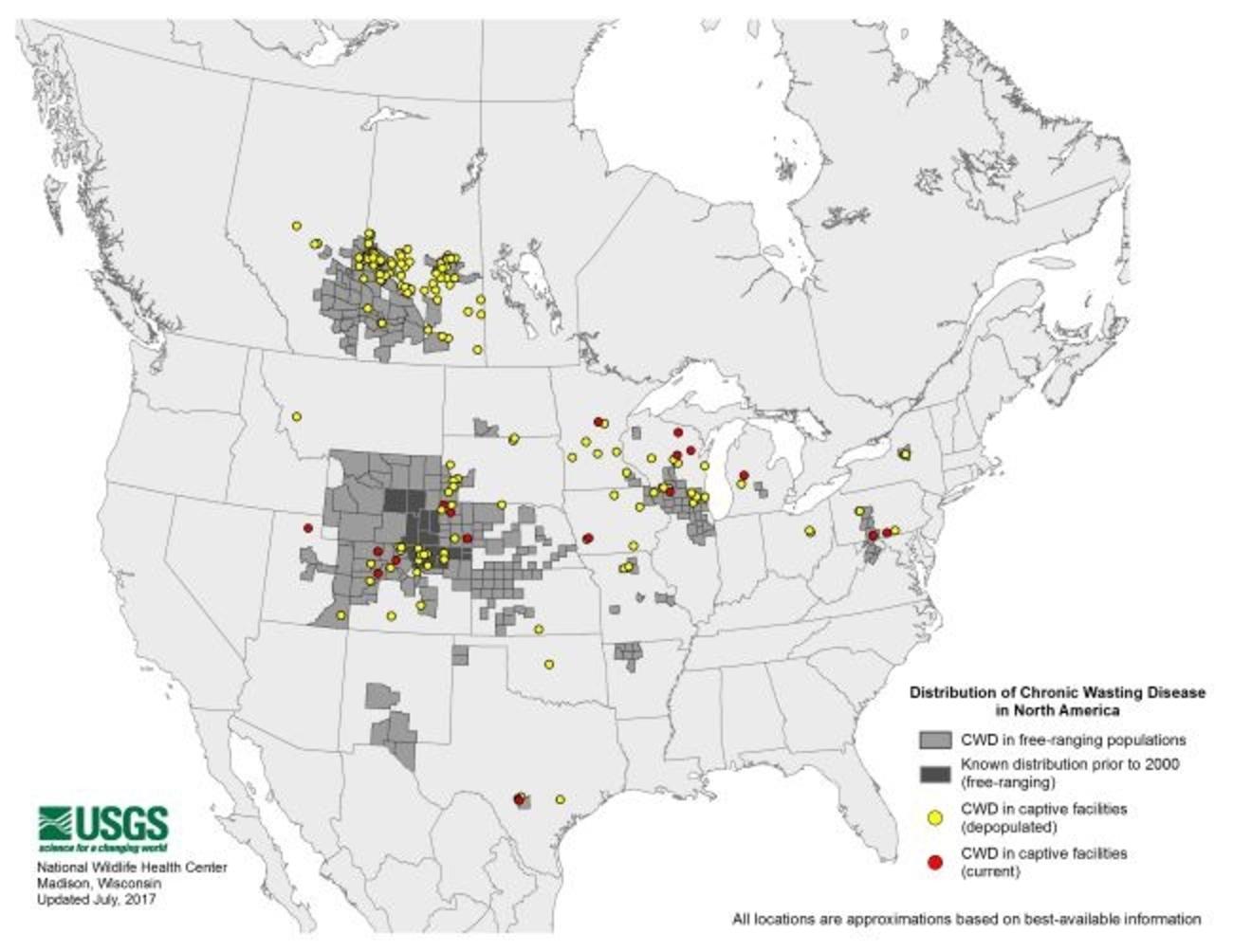
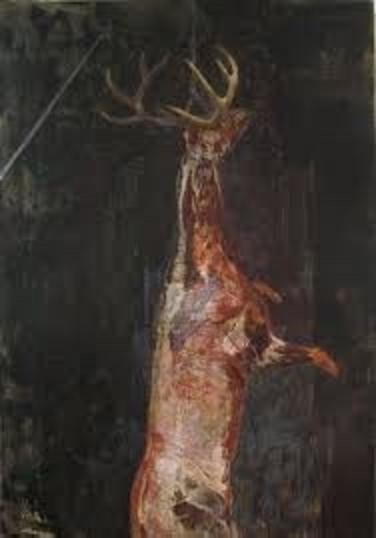
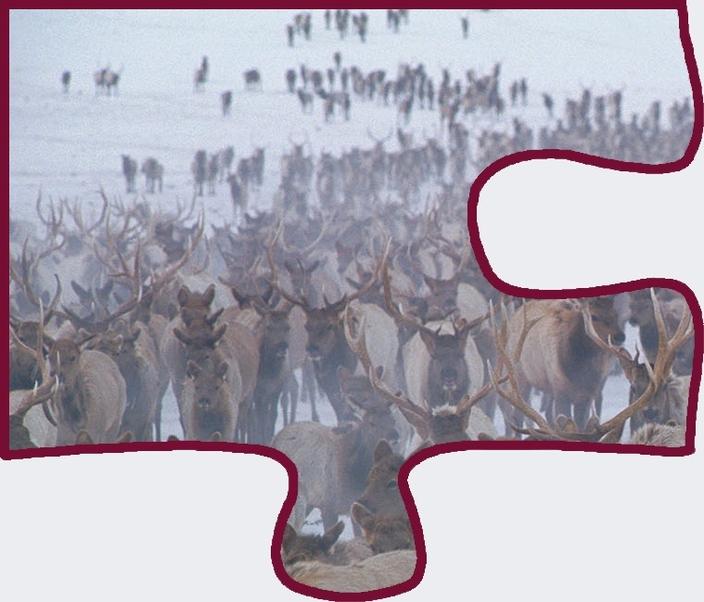
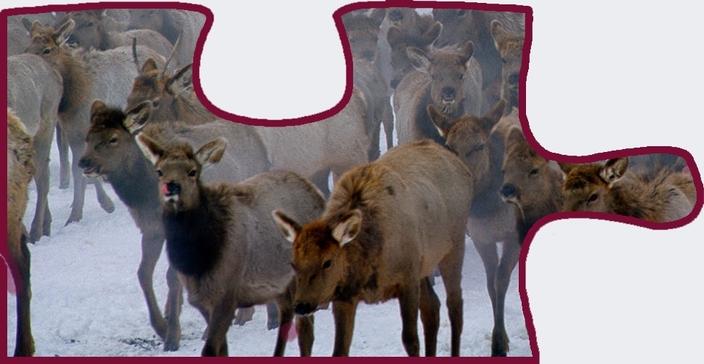
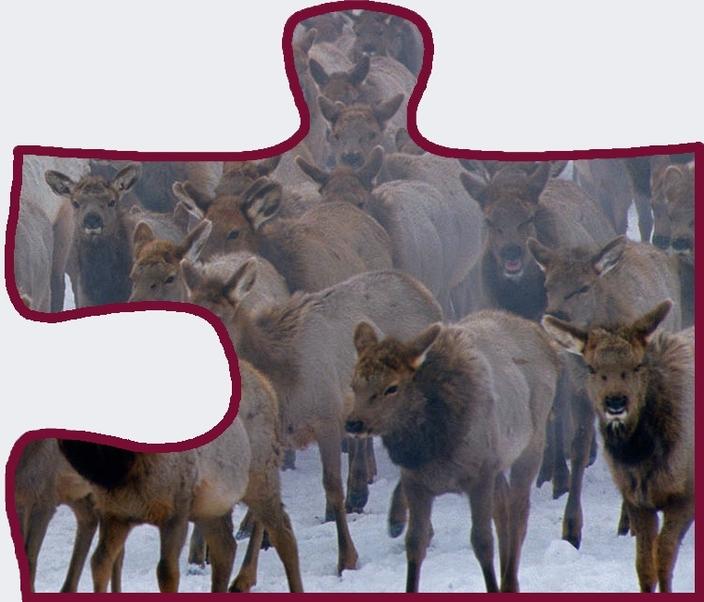

No comments:
Post a Comment